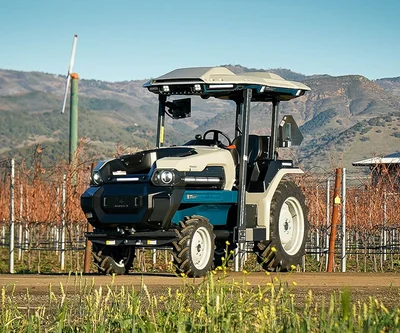Opinion: Going electric

I recently received a call from a reporter wanting my opinion on electric tractors. She had come to the right place, because what I lack in electric tractors I certainly make up in opinions.
I am no stranger to the idea of electric vehicles on farm, having invested in an electric motorbike last season.
I made the purchase for safety reasons; the rider is slight of stature and struggled with the more common petrol-powered bike I provided her with.
The electric bike, being lower to the ground and significantly lighter with a step through frame proved a hit, and she whizzed around the farm easily on the new workhorse.
Thirteen months and three warranty claims later, I regret the decision.
The experience hasn’t put me off electrification, the concept is sound and the issues I experienced could be put down to poor execution in design rather than the fact it was powered by a battery, but it certainly has made me wary of being an early adopter.
The tractor I was asked about had been purchased by Cromwell cherry farmer Mike Casey.
Coming in at around $200,000 to land in New Zealand from the United States, the 50hp equivalent electric tractor is well outside of my budget, especially after the recent drop in the dairy payout.
Full credit to Casey for getting the government and related eco organisations to foot a good chunk of his bill though.
The entrepreneur from Wellington has been very clever to make the system work for him, but I doubt it’s an option available to most farmers.
Casey is using the tractor on his cherry orchard, and the two main benefits he sees from using it are fuel savings and the automation of repetitive tasks, as the tractor can be programmed to operate autonomously without a driver.
For me his second point is the more interesting one and leads me to conclude that electric tractors, in the context of dairy farming, are a made-up solution looking for a problem that never existed.
Having spent nearly 30 years in the industry I know that any tractor on a dairy farm needs a bum on the seat to operate it.
A cherry orchard has uniform rows of evenly spaced trees with little in the way of obstacles, whereas a dairy farm has gates to open, cows to avoid, boggy patches to navigate and a myriad of other obstacles to be considered that simply require a pair of human eyes and, often, a driver to get out of that tractor to deal with.
That’s not to say repetitive tasks on a dairy farm can’t be automated, they can and have been for many years.
Automatic cup removers and teat sprayers have semi-automated milking, robots can fully automate milking if you really want to take that next step.
Many of us are taking up these electric powered modifications with enthusiasm.
For example, in-shed feeding achieves much the same as an electric tractor but at a fraction of the cost: a monotonous task is automated and the workload taken over by grain silos and electric augers rather than a diesel powered tractor and a silage wagon.
Until the cost of this electric vehicle technology comes down, an electric tractor is out of the question on most farms, and unsuitable for most farmer’s wallets.
You can buy an awful lot of diesel for the premium price one of those machines fetches, and the savings in any industry come from minimising wastage and reducing labour costs; be those cup removers, in-shed feeding or automatic drafting.
Farmers are open to change, technological advances and cutting down on waste and emissions.
In fact, it is an industry that has often led the way on all of the above.
So while ideas, entrepreneurial tech electric tractors and the like look good from afar, it is important we investigate the practicality, costs and general usefulness for the farmers they wish to be using them.
by Craig Hickman
